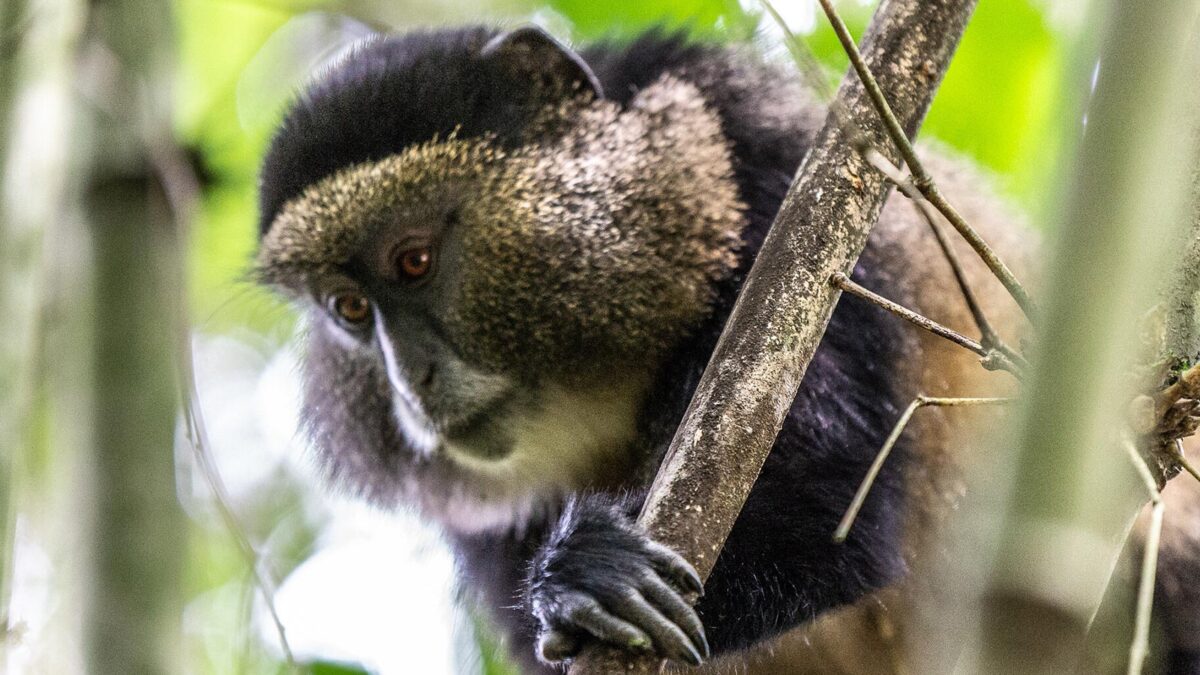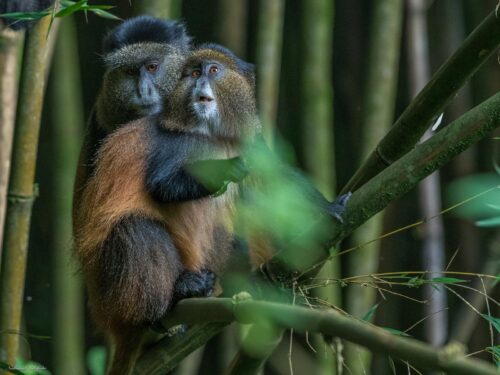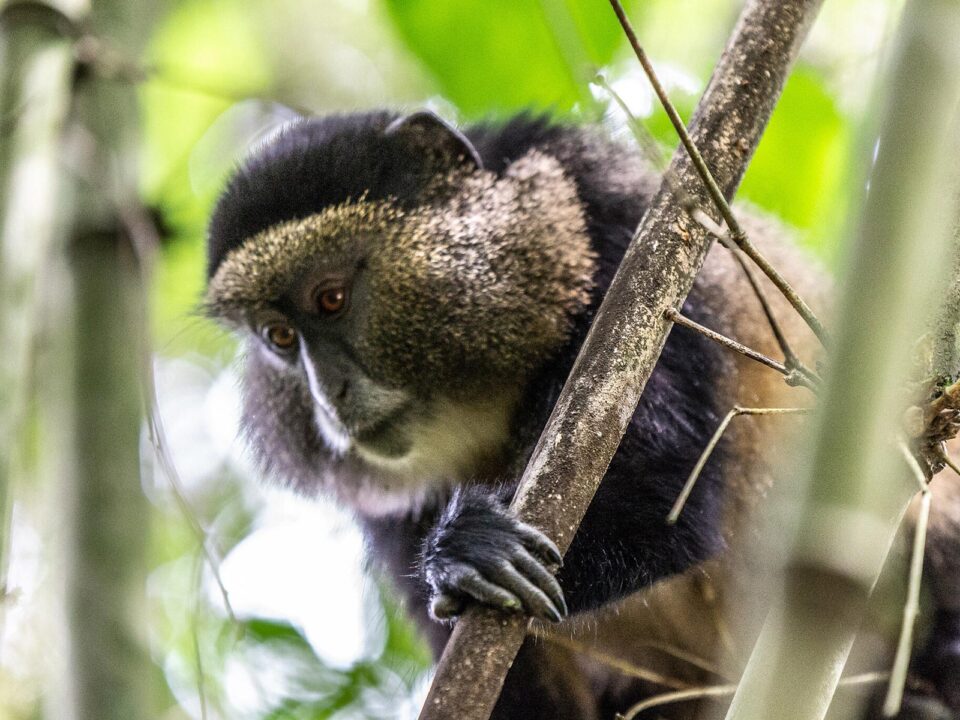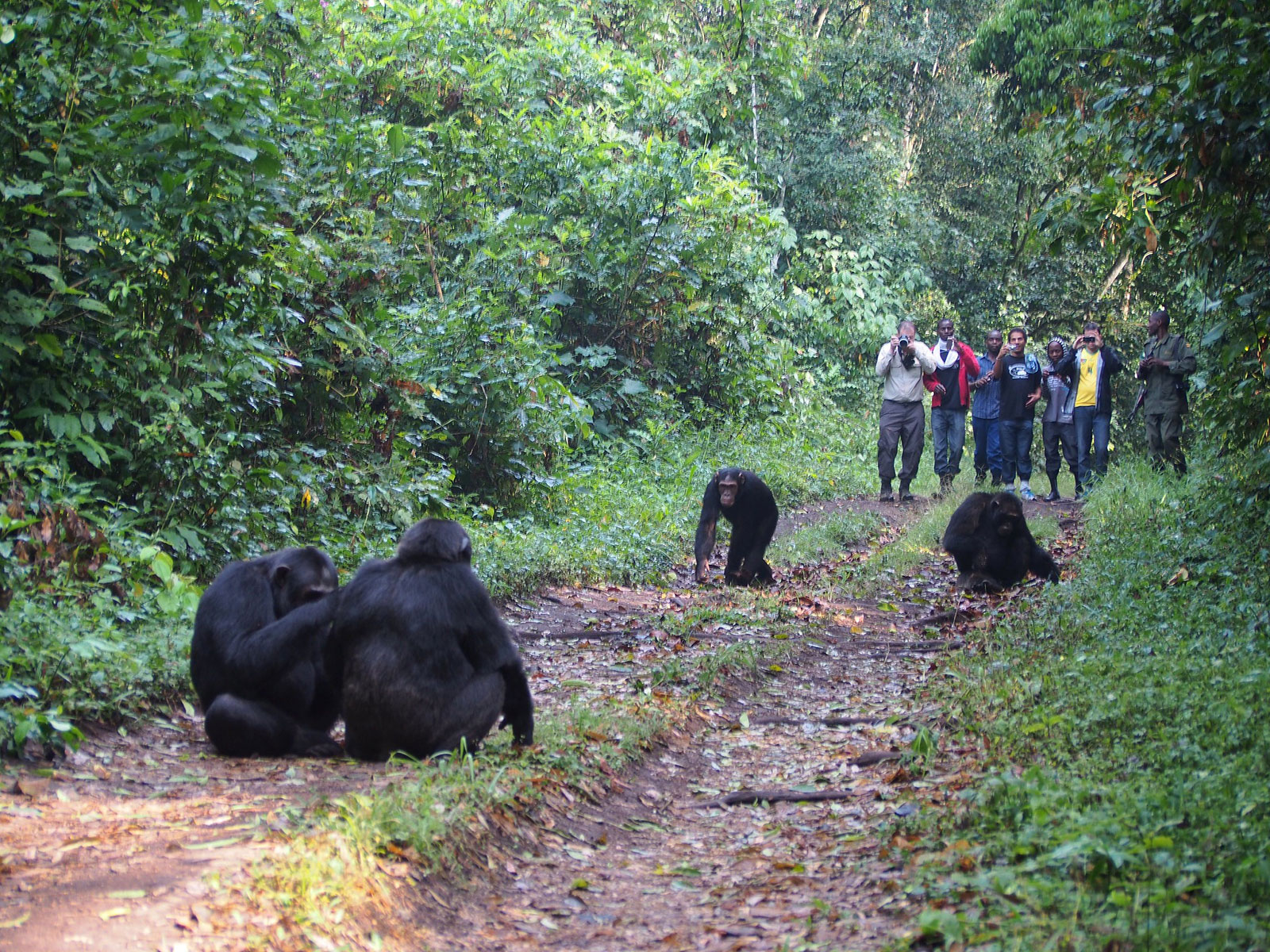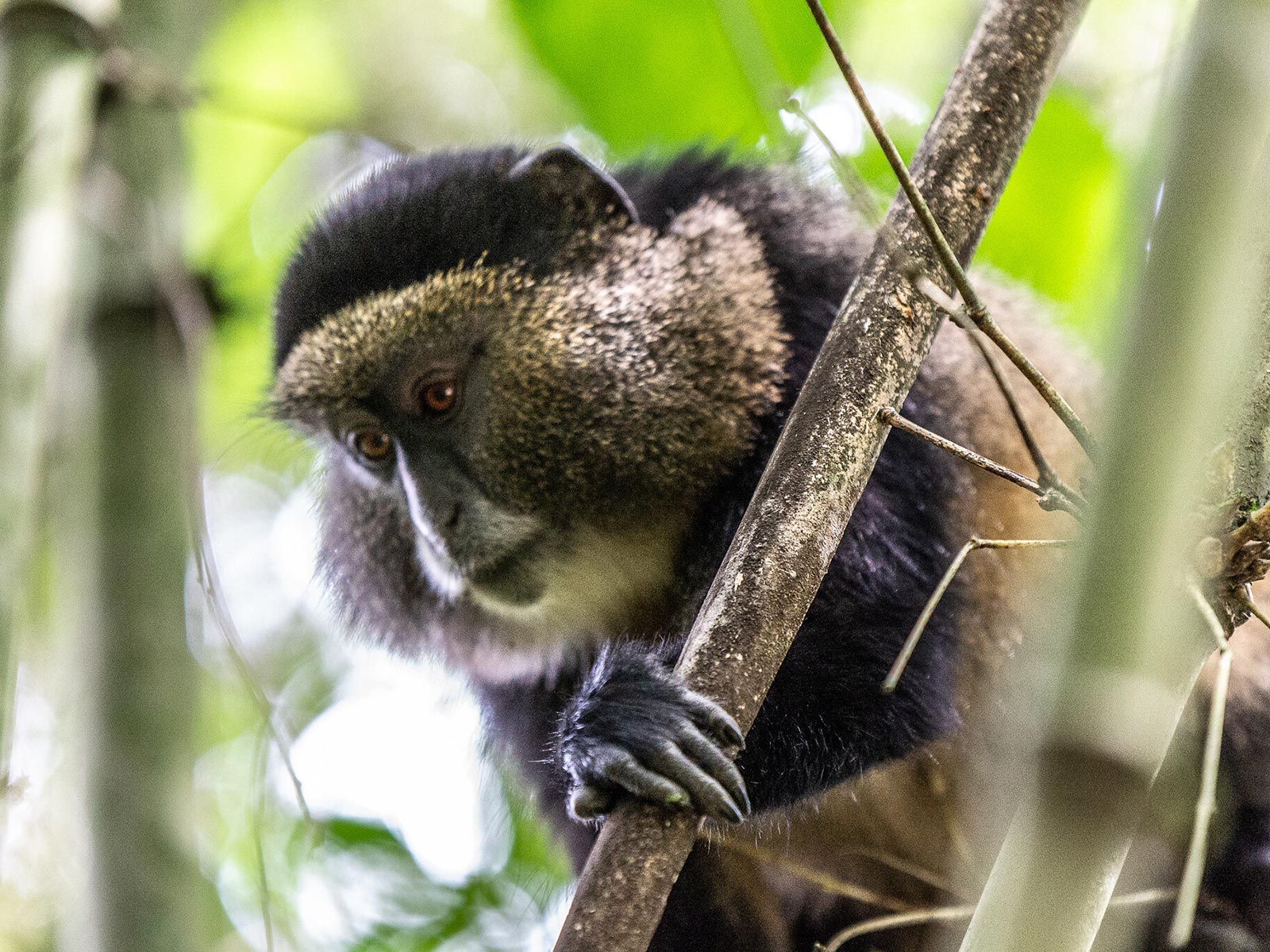Golden Monkey Habituation Experience
Mgahinga Gorilla National Park, a small park with many activities, is the only place in Uganda where visitors can participate in the Golden Monkey Habituation Experience. This experience is not available in Rwanda or the Democratic Republic of Congo, but can only be done in Uganda, known as the Pearl of Africa.
The Golden Monkey (Cercopithecus mitis kandti) is one of the 20 primate species found in Uganda. It is an endemic species that can only be found in Mgahinga Gorilla National Park, part of the Virunga Volcano Massif, which consists of eight volcanoes, three of which are located in the park. The Golden Monkey is also found in Rwanda and the Democratic Republic of Congo. It is estimated that there are between 2,000 and 4,000 remaining, but there has not been a recent census. The Golden Monkey is classified as an endangered species due to habitat reduction and an unexplained inability to produce sufficient offspring.
Golden Monkeys live in troops of about 100, led by an alpha male. They primarily feed on bamboo shoots, seasonal fruits, bamboo leaves, lichens, sprouts, flowers, and small invertebrates. They inhabit the bamboo forests in the Afro-Montane zone on the volcanoes, which is also where gorillas are typically found.
The Golden Monkey Habituation Experience allows tourists to participate in the process of habituating golden monkeys for treks. During the experience, visitors will spend around three hours in the company of rangers and researchers, observing the monkeys as they go about their daily lives without being scared away by human presence. The entire experience takes about six hours and is less challenging than gorilla trekking. One reason for this is that golden monkeys do not move to build new nests each day like mountain gorillas and chimpanzees. The longer duration of the habituation experience allows for more time to take pictures and observe other primates, birds, and wildlife.
Golden Monkey Habituation Experience Permits
If you choose to go golden monkey tracking, you will need to pay a permit fee of USD $60 per person. This will allow you to track and spend 60 minutes with the golden monkeys.
Alternatively, you can participate in the golden monkey habituation experience for a permit fee of USD $100 per person. During this experience, you will spend four hours with researchers following and habituating the monkeys, allowing you to practice nature photography, filming, and observe the monkeys in their habitat.
Golden monkeys are a special and exciting adventure to experience in Uganda or Rwanda, known for their distinctive golden coat. They are very fast-moving, so be sure to have a steady hand when taking pictures. Habituated golden monkeys are playful and used to human presence.
If you want to plan a golden monkey safari in Uganda, our experts can help you with the permit process, book accommodations, meals, and transportation. Contact us to make your experience as smooth as possible.
What to pack for a Golden Monkey Habituation Experience
For the Golden Monkey Habituation Experience, it is important to have the proper gear to protect yourself from thorns, nettles, ants, and flies. This elevation does not have mosquitoes or tsetse flies.
Here are some recommended items to bring:
- Daypack: Preferably a waterproof daypack that can also be used as a carry-on for your flight to Uganda. Make sure to pack all essentials inside.
- Hiking boots: These should have good treads and provide ankle support for the muddy trails. It is also recommended to bring a pair of merino wool socks.
- Long trousers: These will protect you from nettles and thorns. Tucking the trousers into your socks can also help protect against ants.
- Long-sleeved shirt: It is best to choose a neutral color for comfort and protection.
- Rain jacket or poncho: Pack these into your daypack in case of rain. You are in an Afro-montane rainforest, so it is best to be prepared.
- Tough gardening gloves: These will protect your hands from thorns, nettles, and sharp branches.
- Wide brimmed hat: This will provide protection from the sun.
- Camera equipment and binoculars: Make sure to bring extra batteries and storage devices. If you are not a birder, binoculars may not be necessary.
- Packed lunch and bottled water: You will need to bring your packed lunch from the lodge and two liters of bottled water.
- Insect repellent, sun lotion, and sunglasses: It is recommended to use effective insect repellent, such as Australian RID. Sun blocker cream and sunglasses will also be helpful.
Best time for Golden Monkeys Habituation Experience in Mgahinga Gorilla National Park
The best time for the Golden Monkeys Habituation Experience in Mgahinga Gorilla National Park is subjective and depends on your personal preferences and interests. Here are a few factors to consider when deciding on the best time for your visit:
- Weather: Mgahinga Gorilla National Park has a tropical climate with two main seasons: dry and wet. The dry season, which runs from June to September and December to February, is generally considered the best time to visit as it is typically drier and cooler. However, the wet season, which runs from March to May and October to November, can also be a good time to visit as it is typically more lush and green.
- Crowds: Mgahinga Gorilla National Park is a popular tourist destination, and the number of visitors can vary throughout the year. If you prefer to avoid crowds, it is best to visit during the off-peak season, which is typically from April to May and November.
Ultimately, the best time for the Golden Monkeys Habituation Experience in Mgahinga Gorilla National Park will depend on your specific interests and preferences. It is recommended to do some research and consider the factors mentioned above to determine the best time for your visit.
How to get to Mgahinga Gorilla National Park
By Road
The drive from Kampala to Kisoro, the nearest town to Mgahinga Gorilla National Park, takes about 9 hours via Kabale. It is highly recommended to use a 4WD vehicle for this journey, as the route winds through some of the most beautiful scenery in Uganda. If you do not have your own private vehicle, there is a daily bus service available for tourists. Please note that you will need to hire an additional shuttle from Kisoro town to the park’s boundary.
By Air
There are several flight options available from Entebbe International Airport and Kajjansi Airstrip to Kisoro Airstrip, including daily scheduled flights and chartered flights. These flights typically last around 1 hour and 10 minutes. Upon arriving at Kisoro Airstrip, tourists will need to travel via murram road to reach the park.

